EVERETT, Wa. — Terrica Purvis squinted through goggles as her hands carefully guided a pipette full of indigo-tinted fluid into clear glass test tubes.
It was the last chemistry lab of the winter quarter at Everett Community College. Purvis was working through the steps of what chemistry professor Valerie Mosser jokingly refers to as the “post-apocalypse survival” lab — an experiment using boiled red cabbage water to test the acidity of common household chemicals.
Purvis, 27, is in her first year of study for an associate degree in nursing at Everett Community College. She is also one of more than 6,000 Washington community and technical college students enrolled in the state’s Integrated Basic Education and Skills Training (I-BEST) program.
Students who need extra help in subjects such as algebra struggle to learn if the content is taught in an abstract way, educators say. So I-BEST programs feature two teachers in the classroom: One provides job training and the other teaches basic skills in reading, math or English language.
___
EDITOR’S NOTE: This story is part of Saving the College Dream, a collaboration between AL.com, The Associated Press, The Christian Science Monitor, The Dallas Morning News, The Hechinger Report, The Post and Courier in Charleston, South Carolina, and The Seattle Times, with support from the Solutions Journalism Network.
___
Nationally, two-year community colleges have the worst completion rates in higher education, with only slightly more than 40% earning degrees within six years.
In Washington state, students in the program graduate at a higher rate. Among students who started college from 2015 to 2018, an average of 52% enrolled in I-BEST classes earned a degree or certificate within four years. That compares with 38% of students who did so while enrolled in traditional adult basic education coursework, according to the state Board for Community and Technical Colleges.
The program is so successful that 12 states have begun implementing an I-BEST model at one or more education institutions.
For Purvis, who hadn’t been in school for nearly a decade, this class meant getting extra math help when she needed it: during a chemistry class.
Each time Mosser gave a lecture or held a lab, she was joined by Candace Ronhaar, who works as a tutor and extra math instructor.
In one session, Ronhaar drew a heart on the whiteboard. She wrote the word “mole” beside it, and explained it is a unit of measurement equivalent to the amount of atoms in 12 grams of carbon-12. She guided students through practice problems, calculating the mass of chemical compounds.
All six students in Chemistry 121 were also taking an entry-level statistics class, and Ronhaar was co-instructor for both courses. Mosser said Ronhaar’s presence was the most valuable part of the I-BEST model.
“I’m an assessment instructor,” Mosser said. “She’s just a helping instructor. In the minds of students, the difference is incalculable. They have a different relationship with her. They’re more willing to go to her, because she doesn’t grade them.”
Purvis said chemistry was the first class that ever “humbled” her. She doesn’t think she would have passed without I-BEST. Students fresh out of high school had an easier time remembering chemistry and math, Purvis said, but she hadn’t studied those subjects for 10 years.
“They couldn’t have picked a better second instructor,” Purvis said of Ronhaar. “I loved it. We went to her office hours all the time.”
After high school, Purvis spent six years as a cook in the Navy, and took classes at a couple other colleges. Last year, she was medically discharged and returned to school at Everett Community College full-time. She plans to go on to pursue a Bachelor of Science in Nursing, and hopes to work in labor and delivery at a hospital.
Helping more students graduate from nursing school has a larger societal benefit. In the first year of the pandemic, from 2020 to 2021, the number of working registered nurses in the United States decreased by more than 100,000 — the highest drop in four decades. An estimated 200,000 jobs for registered nurses are expected to open each year in the U.S. through 2031, the Bureau of Labor Statistics reported in 2021.
I-BEST was launched as a state pilot program almost 20 years ago as data suggested students needed vocational training to improve job prospects. The program was to change the remediation model in most community colleges, where students who don’t do well on placement tests must take pre-college classes in their weak subject — essentially a repeat of high school.
I-BEST enrollment in the state has increased by more than 20% in the past five years, bringing in a diverse group of students. Forty-six percent of its students are students of color, 55% are women and 39% have dependents.
I-BEST opens the door to federal financial aid by making it available to students who didn’t graduate from high school. Under financial aid rules, students must either have a high school diploma or prove their “ability to benefit” from aid by being enrolled in a qualifying program, such as I-BEST, where they learn basic skills as part of their career pathway.
Along with nursing, other high-demand I-BEST job pathways include aeronautics, manufacturing and information technologies.
At Bellevue College, I-BEST students enrolled in Business 101 meet with instructor Eric Nacke for an adult basic education class on a separate day. Nacke teaches English in the context of the business world.
Student Forouzan Barfibafeghi moved from Iran to the U.S. in 2020. She holds a bachelor’s degree in business from Islamic Azad University in Tehran, where she graduated in 1999. She said Nacke’s classes have helped her develop her English skills and given her a sense of community.
"We have created a strong bond between us. That is one of the highlights for me,” said Barfibafeghi, who hopes to find work in the insurance industry after completing an associated degree in business.
In Washington, because I-BEST uses a mix of state, federal and other grant funds, the state doesn’t know how much the program costs. But the model calling for two instructors does make it more expensive than other adult basic education programs. The program might be more broadly replicated if it weren’t so costly, state community college spokesperson Laura McDowell said.
As Purvis prepared for her next quarter of classes, the student said she hoped her future instructors would be as helpful as Ronhaar.
“She’s my favorite instructor so far since I’ve been going to Everett,” Purvis said. “We needed her. She had to be there.”
___
The Associated Press education team receives support from the Carnegie Corporation of New York. The AP is solely responsible for all content.
Sourse: abcnews.go.com






